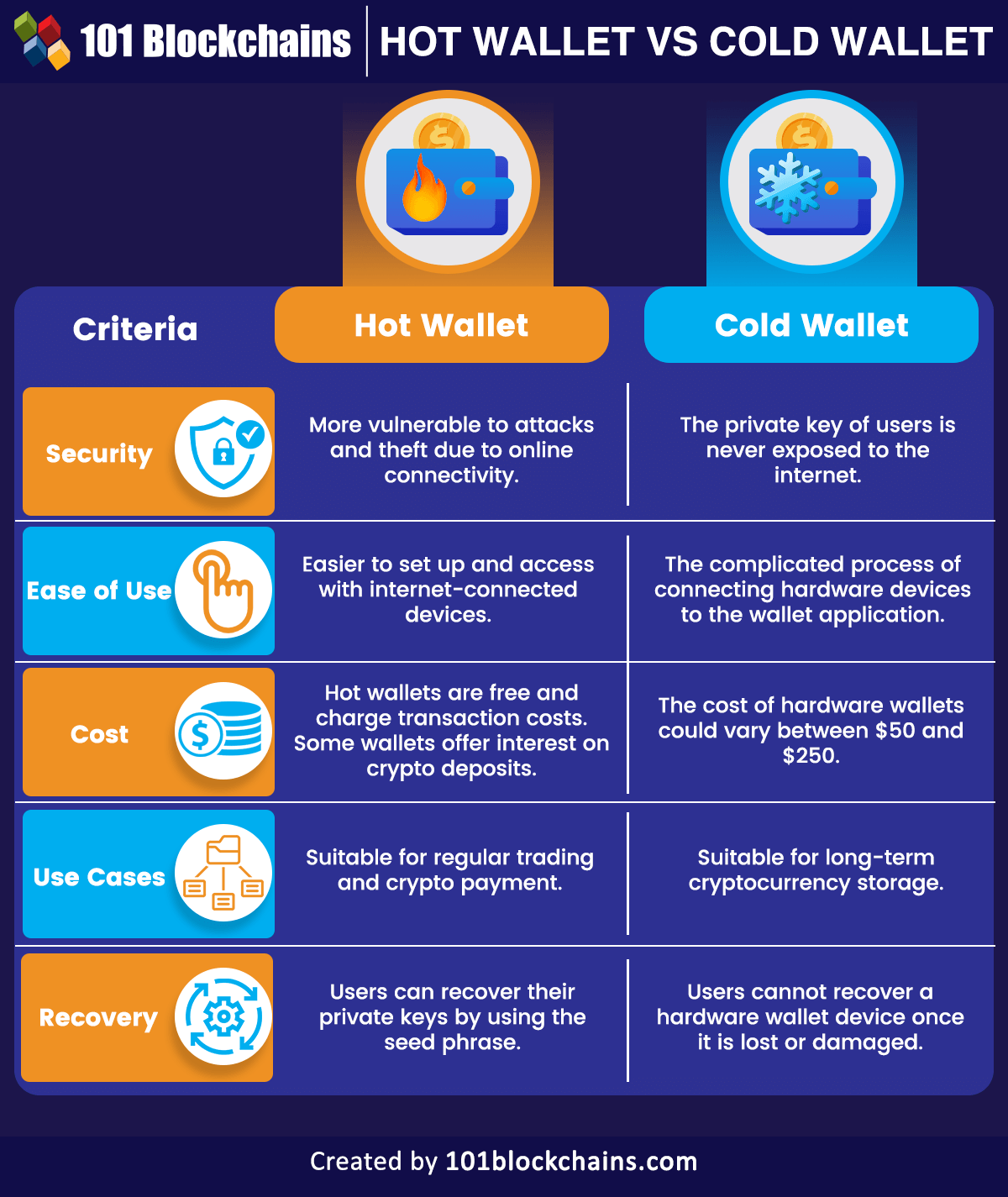
Image by Digital Artist NFTMentis
In the rapidly evolving world of digital assets, security is paramount. As the popularity of NFTs (Non-Fungible Tokens) and cryptocurrencies continues to soar, it’s essential to understand the importance of protecting your investments in 2024. This article will discuss why using a cold wallet is the best way to safeguard your digital assets, including NFTs and cryptocurrencies for 2024.
What is a Cold Wallet?
A cold wallet, also known as a hardware wallet, is a physical device that stores your private keys offline. This means your digital assets are kept in a secure environment that is not connected to the internet, making it much harder for hackers to access. Cold wallets provide an extra layer of security compared to hot wallets (online wallets), which are more vulnerable to cyber attacks as they are constantly connected to the internet.

Why is a Cold Wallet Important for NFTs and Crypto?
Enhanced Security
Cold wallets offer the highest level of security for your digital assets. By keeping your private keys offline, you significantly reduce the risk of your assets being stolen.
Protection Against Cyber Attacks
The offline nature of cold wallets makes them less susceptible to hacking attempts and cyber attacks. This is especially important for high-value assets like NFTs and cryptocurrencies.
Peace of Mind
Knowing that your digital assets are stored in a secure, offline environment can provide you with peace of mind, allowing you to focus on other aspects of your digital investment journey.
There are hundreds and thousands of preventable wallet hacks and drains every year that could have been easily prevented by keeping assets on a hardware wallet. If you have over $150 worth of assets, you should be holding them on a cold storage. There’s no excuse for losing your favorite or expensive NFTs or coins to a scammer, considering the low cost of cold storage.
Choosing the Right Cold Wallet:
There are several reputable cold wallet brands available, such as Ledger, KeyStone, Tangem, and Trezor. When selecting a cold wallet, consider factors like security features, ease of use, and compatibility with your desired cryptocurrencies and NFTs. It’s also important to follow best practices for cold wallet usage, such as keeping your cold wallet in a safe place, regularly updating its firmware, and using strong, unique PINs or passwords.

7 Cold Wallet Best Practices for 2024:
1. Keep your cold wallet offline
The primary purpose of a cold wallet is to keep your private keys safe from online threats. Make sure to keep your cold wallet disconnected from the internet when you’re not actively using it.
2. Store your recovery phrase securely
Your recovery phrase is the key to your wallet. If you lose it, you may lose access to your assets. Store it in a secure location, such as a fireproof safe or a safety deposit box.
3. Use a strong PIN or password
Your cold wallet will likely require a PIN or password to access it. Make sure to use a strong, unique password that you don’t use for any other accounts.
4. Keep your cold wallet software up to date
While your cold wallet should be offline most of the time, it’s important to update the software when necessary. Updates often include important security fixes and new features.
5. Use a separate wallet for daily transactions
To minimize the risk of your cold wallet being compromised, consider using a separate hot wallet for daily transactions. Only transfer the funds you need to your hot wallet, and keep the rest in your cold wallet.
6. Be cautious of phishing attempts
Scammers may try to trick you into revealing your private keys or recovery phrase. Always double-check the URL of any website you visit, and never enter your private information unless you’re sure it’s a legitimate site.
7. Never EVER EVER connect your wallet to a site you don’t know – EVER
Absolutely crucial: under no circumstances should you link your wallet to an unfamiliar site. Scammers employ deceitful tactics, luring you to connect your wallet under false pretenses, potentially exposing vulnerabilities for an attack without your awareness. Opt for a Hot wallet when interfacing with mint sites for added security.
By following these best practices, you can ensure the safety and security of your cryptocurrencies and NFTs stored in a cold wallet. Using a cold wallet is a smart move for anyone investing in NFTs and crypto. By keeping your assets in a secure, offline environment, you can have peace of mind knowing that your investments are well-protected. Don’t wait until it’s too late – secure your digital assets with a cold wallet today!
Don’t forget to share this article with your NFT and crypto community to help them protect their investments as well.






